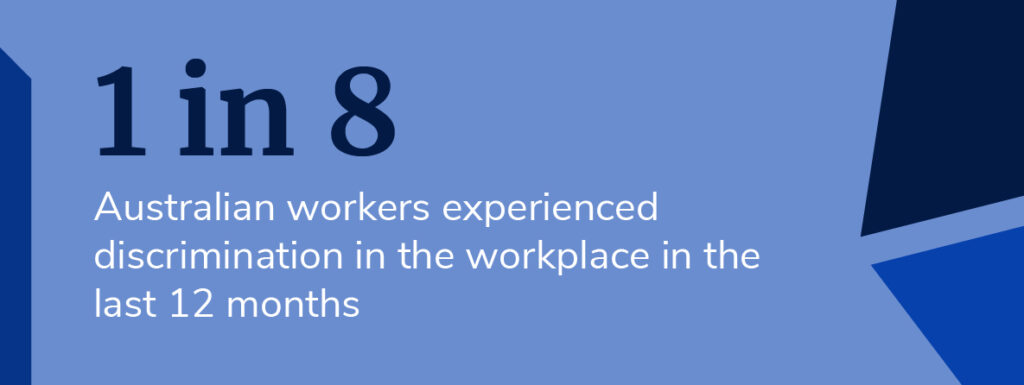Have you ever felt unfairly treated or harassed in your workplace? Unfortunately, workplace discrimination and harassment are not uncommon occurrences in many workplaces around the world, including in Australia. Workplace discrimination can come in many forms, including ageism, sexism, racism, and ableism. Harassment can also take many forms, such as verbal or physical abuse, unwanted advances, and bullying.
As an employee, it’s crucial to understand your rights in the workplace and what constitutes discrimination and harassment. In this article, we will provide you with a comprehensive guide to workplace discrimination and harassment, including the types of discrimination and harassment, examples of workplace discrimination, and the consequences of breaching discrimination legislation in Australia.
We will also discuss anti-discrimination legislation in the workplace, workplace bullying laws, and your rights as an employee. By the end of this article, you will have a clear understanding of workplace discrimination and harassment, and you’ll be better equipped to identify and address these issues if they arise in your workplace. Let’s dive in!
Understanding Workplace Discrimination
Workplace discrimination refers to the unfair treatment of an individual or group of individuals based on their race, sex, age, religion, or any other personal characteristic protected by law. Unfortunately, it is particularly prevalent, with more than 1 in 8 Australian workers experiencing discrimination in the workplace in the last 12 months. It can take many forms, including but not limited to, denial of equal pay, hiring or promotion based on personal characteristics, and unjustified criticism of work performance.

The Types of Discrimination in the Workplace
Workplace discrimination takes various forms, including direct and indirect discrimination, victimisation, and harassment. Direct discrimination is treating someone unfairly due to personal characteristics like gender or race. Indirect unlawful discrimination occurs when a policy or practice negatively impacts a group due to personal characteristics. Victimisation is treating someone unfairly after they have made a complaint or taken action about discrimination. Harassment is unwanted behaviour that is offensive, intimidating, or hostile, including sexual, racial, and personal harassment. Employers should have policies that prohibit discrimination and harassment, and employees should be aware of their rights and responsibilities in maintaining a respectful workplace.
What Constitutes Workplace Discrimination?
Workplace discrimination can occur in many forms such as being treated unfairly because of personal characteristics like gender, race, age, religion, and sexual orientation. This could mean being denied job opportunities, receiving unjustified criticism or being subjected to offensive remarks or jokes. It’s important to note that discrimination can happen to anyone regardless of their personal characteristics. Identifying these practices and understanding what constitutes workplace discrimination is essential to creating a safe and respectful workplace environment.
The Consequences of Discrimination
Breaching discrimination legislation in Australia can have severe consequences for individuals and organisations. The Australian Human Rights Commission investigates and resolves complaints of discrimination, and individuals or organisations found guilty of breaching anti-discrimination laws can face significant fines or penalties.
It’s essential to remember that workplace discrimination not only affects the individual being discriminated against but also impacts the overall workplace environment. It can lead to low morale, high employee turnover, and decreased productivity. Therefore, it’s crucial for organisations to actively promote and enforce anti-discrimination policies and practices.
Understanding Harassment in the Workplace
Harassment in the workplace refers to any unwelcome behaviour that creates a hostile or intimidating environment. It can be physical, verbal, or written and can happen to anyone, regardless of their gender, race, or age. Harassment can take many forms, including bullying, threats, unwanted physical contact, and verbal abuse.

Workplace harassment takes various forms, including sexual, racial, and personal harassment. Sexual harassment entails unwanted sexual advances or comments, requests for sexual favours, or other sexually suggestive behaviour. Racial harassment involves offensive or derogatory comments or actions towards a person based on their race or ethnicity. Personal harassment encompasses unwelcome behaviour not based on personal characteristics, such as bullying or excessive criticism. Recognising the different forms of harassment and understanding the impact on the victim and the workplace is important in promoting a safe and inclusive work environment for all employees.
Examples of Workplace Harassment
Workplace harassment can take many forms, including unwanted physical contact, offensive remarks or jokes, constant criticism, and threats of physical harm. Harassment does not have to be severe or pervasive to be considered illegal. A single incident of harassment can create a hostile work environment, which occurs when an individual is subjected to harassment or discrimination that is severe or pervasive enough to interfere with their ability to perform their job duties. Hostile work environments can lead to increased stress, decreased productivity, and mental health issues for the affected individual.
The Consequences of Workplace Harassment
To prevent and address workplace harassment, it’s crucial for organisations to have clear policies and procedures in place. These policies should include a process for reporting and investigating harassment claims, as well as consequences for individuals found guilty of harassment. Additionally, it’s important for all employees to receive training on harassment prevention and to understand their responsibilities in maintaining a safe and respectful workplace.
Understanding Your Rights in the Workplace
As an employee, it’s crucial to understand your rights in the workplace and how to address any issues that may arise, especially regarding workplace discrimination and harassment. By now, you know that workplace discrimination can take many forms, including direct and indirect discrimination, and that it can lead to a variety of negative consequences for both the individual and the workplace as a whole. You also understand that harassment in the workplace can create a hostile work environment and that it can be physical, verbal, or written. So, what can you do if you experience workplace discrimination or harassment?

Familiarising Yourself with Anti-Discrimination Laws and Policies
First and foremost, it’s important to know your rights. You should familiarise yourself with anti-discrimination laws and your employer’s policies on harassment and discrimination. In Australia, the Anti-Discrimination Act 1977 and the Fair Work Act 2009 protect employees from discrimination and harassment in the workplace.
Documenting Incidents of Discrimination or Harassment
It’s also essential to document everything related to any incidents of discrimination or harassment that you experience. This documentation should include what was said or done, who was involved, and when it occurred. This documentation can be useful if you decide to make a complaint.
Addressing Discrimination or Harassment
If you feel comfortable doing so, it’s advisable to talk to the person who is discriminating or harassing you and let them know that their behaviour is not acceptable. However, if this is not possible or doesn’t work, you should talk to a manager, HR representative, or union representative. They can help you address the issue and take appropriate action to stop the behaviour.
If you’ve tried to address the issue but haven’t seen any progress, you can make a formal complaint to your employer or the Australian Human Rights Commission. Keep in mind that there are time limits for making a complaint, so act quickly. You may wish to consult a team of legal experts to help you navigate this process. Seeking support from friends, family, or a counsellor can also help you cope with the stress and anxiety that can come with experiencing workplace discrimination or harassment.
By understanding your rights and taking action if you experience discrimination or harassment, you can help create a more inclusive and equitable workplace for yourself and others. Speaking up and taking action can be challenging, but it’s necessary to create a workplace culture where everyone feels respected and valued.





